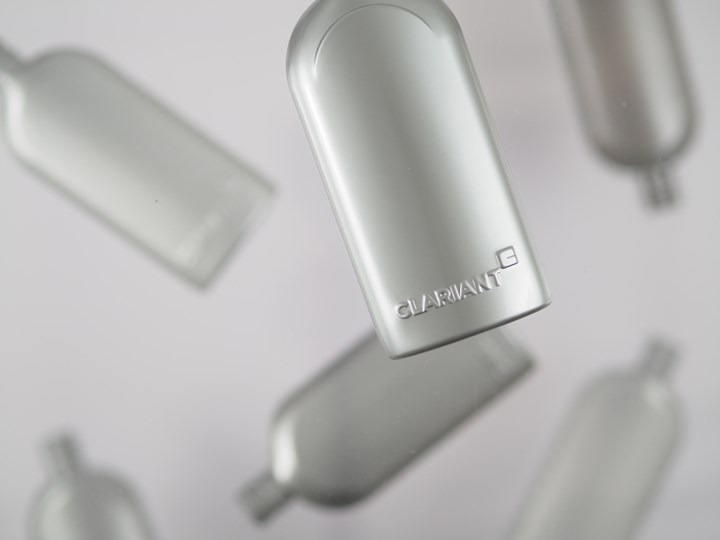Additives: Unusual Chrome Colorant for High-End PET Products
Clariant’s NewAesthetix liquid-look chrome colorant is the first in this new portfolio of unique color and effects.
A novel liquid-look chrome colorant that is said to open new opportunities for designers and manufacturers of high-end PET bottles and packaging has been developed by Clariant Masterbatches, Charlotte, N.C. Moreover, this masterbatch is the first product to arise from NewAesthetix, a new initiative from Clariant’s ColorWorks global design and technology centers aimed at developing unique color and effect options that deliver aesthetic qualities not normally expected in plastic materials.
The new chrome color is slightly translucent, so it is ideal for applications where it is necessary or desirable for the contents in the bottle to be visible. Yet it has the power to overcome slightly off-color resins, including post-consumer recycled (PCR) PET. In fact, the effect was first demonstrated on bottles made of recycled PET resin.

The ColorWorks team developed the new color masterbatches in response to growing interest, particularly in the technology sector, for truly metallic looks. Designers recently began focusing on silver and chrome with a liquid feel, explains Judith van Vliet, ColorWorks senior designer and a recognized color expert. “You see it a lot in glass and that kind of transparency is also very trendy. Clariant’s new chrome masterbatch develops a look that is the closest I’ve seen to a true metallized effect. It does a very good job of bringing those bright qualities to plastics for use in bottles containing prestige products.”
The secret to achieving the brilliant chrome effect lies in the pigment particle-size distribution and the way it is incorporated into the masterbatch. Reflectivity is dramatically increased compared to more conventional silver or chrome colors.
The chrome effect has other benefits as well, including the way it reacts to laser radiation. Unlike other colors, which turn grey or black under laser radiation and leave a physical, palpable mark on the surface, the chrome pigment simply disappears leaving only the natural transparent polymer behind. “You can create very subtle, elegant markings…You get a three-dimensional look, even on very thin sections like those that are typical of injection-stretch blow molded PET,” reports Stephanie Dycha, manager of the ColorWorks center in West Chicago, Illinois
“If there is one place that has a mission to try new things, it is ColorWorks, That’s because ColorWorks is global – we’re not in just one country or location -- and we’re not just focused on a specific market segment. In fact, we experiment with almost any kind of pigments or effects, even those that may have not been developed originally for application in thermoplastic materials,” says Dycha.
Related Content
-
At NPE, Cypet to Show Latest Achievements in Large PET Containers
Maker of one-stage ISBM machines will show off new sizes and styles of handled and stackable PET containers, including novel interlocking products.
-
Breaking the Barrier: An Emerging Force in 9-Layer Film Packaging
Hamilton Plastics taps into its 30-plus years of know-how in high-barrier films by bringing novel, custom-engineered, nine-layer structures resulting from the investment in two new lines.
-
Get Color Changes Right In Extrusion Blow Molding
Follow these best practices to minimize loss of time, material and labor during color changes in molding containers from bottles to jerrycans. The authors explore what this means for each step of the process, from raw-material infeed to handling and reprocessing tails and trim.
















